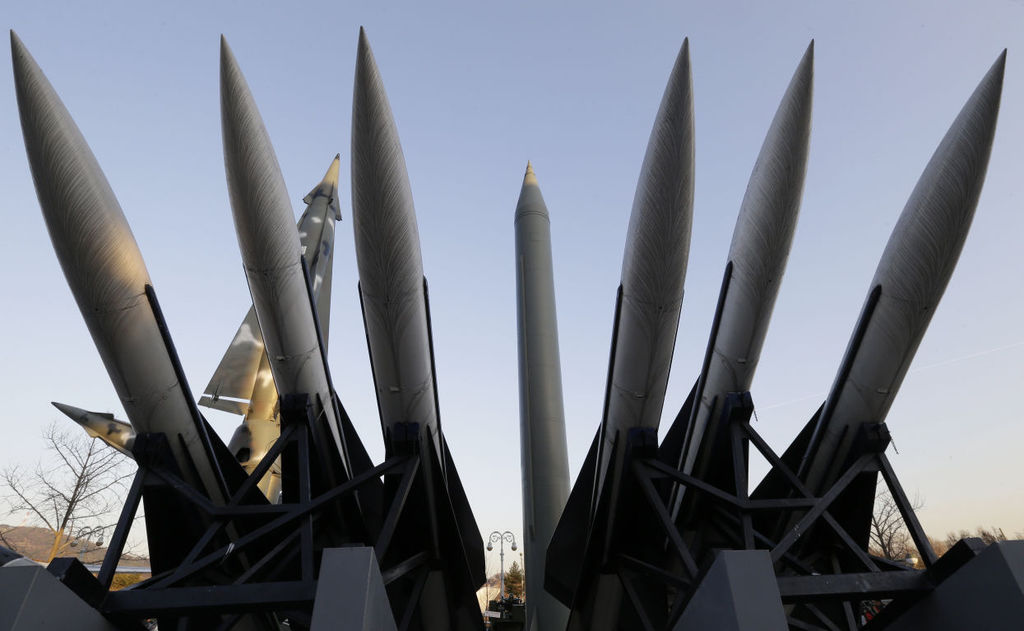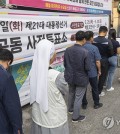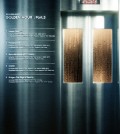- California Assembly OKs highest minimum wage in nation
- S. Korea unveils first graphic cigarette warnings
- US joins with South Korea, Japan in bid to deter North Korea
- LPGA golfer Chun In-gee finally back in action
- S. Korea won’t be top seed in final World Cup qualification round
- US men’s soccer misses 2nd straight Olympics
- US back on track in qualifying with 4-0 win over Guatemala
- High-intensity workout injuries spawn cottage industry
- CDC expands range of Zika mosquitoes into parts of Northeast
- Who knew? ‘The Walking Dead’ is helping families connect
N. Korea’s nuclear stockpile could expand to 100 weapons: US expert
WASHINGTON (Yonhap) — North Korea’s nuclear stockpile could expand to as many as 100 weapons by 2020, a U.S. expert said Tuesday, calling for greater international attention and efforts to stop the communist regime from its nuclear rush.
Joel Wit, the chief analyst running the website 38 North at Johns Hopkins University, announced the projections during a seminar, saying Pyongyang is currently believed to have 10-16 nuclear weapons, six to eight of them based on plutonium and four to eight based on weapons-grade uranium.
Wit also said the North is believed to have miniaturized the plutonium-based weapons enough to be mounted on medium-range Nodong missiles, which can strike South Korea and Japan, and on Taepodong-2 missiles that can achieve intercontinental ranges.
He also stressed the North can significantly expand its arsenal without additional nuclear tests.
“Our fixation with when these tests happen really is not the right way to view this issue. Tests could happen. They may never happen again. If they never happen again, it doesn’t mean that North Korea isn’t the threat or isn’t a problem,” Wit said.
“Even as we are sitting here, I’m willing to bet they’re producing fissile material for nuclear weapons even though they haven’t conducted a test,” he said.
North Korea has conducted three nuclear tests, in 2006, 2009 and 2013. The provocative nation has also carried out a series of long-range missile or rocket launches in an effort to develop nuclear-tipped intercontinental ballistic missiles capable of reaching the U.S.
Wit put forward three scenarios of the North’s nuclear arsenal expansion, with the minimal growth scenario forecasting the stockpile to expand to 20 weapons and the moderate growth scenario predicting an arsenal of 50 weapons by 2020.
Should the North remain on its current trajectory, the moderate growth scenario would be the case, he said.
The worst case scenario of 100 weapons could happen when significant advances are made in weapons designs allowing the North to deploy battlefield and tactical weapons if it chooses to do so. The average stockpile yield in that case could increase to 20 or more kilotons, with an increasing number having yields of 50 kilotons, he said.
In addition, a one stage thermonuclear device with a yield of 100 kilotons can be tested, he said.
Nuclear proliferation is also a key concern, he said.
“If their stockpile grows, both nuclear and missiles, the possibility is definitely going to increase that know-how and technology may go abroad for the right price,” he said.
The expert called for the U.S., South Korea and Japan to “wake up” and focus on efforts to cope with the North’s increasing nuclear stockpile. Wit said in particular that South Korea appears to be putting too much emphasis on preparations for unification.
“Why does anyone think that a North Korea with 50 to 100 nuclear weapons is going to be interested in reunification with South Korea on any terms but its own? It’s just not going to happen. So we need to purge our policies of fantasies and focus on reality,” he said.
Meanwhile, the U.S think tank Heritage Foundation said it also believes the North “has likely already achieved warhead miniaturization, the ability to place nuclear weapons on its medium-range missiles, and an ability to reach the continental United States with a missile.”
The assessment was included in the foundation’s “2015 Index of U.S. Military Strength” report.
“Enough information is available to conclude that North Korea has likely already achieved the ability to deliver nuclear weapons by means of its Nodong medium-range missile,” the report said, adding that Pyongyang has pursued nuclear and missile programs for decades and could have won cooperation from Pakistan and Iran.
As to the North’s missile capabilities, the report said the country has deployed about 800 Scud short-range ballistic missiles, 300 Nodong medium-range missiles and 50 Musudan intermediate-range ballistic missiles.
“Pyongyang continues its development of the Taepo-dong series of ICBMs, at least some of which have a range sufficient to hit parts of the U.S.,” the report said.

















